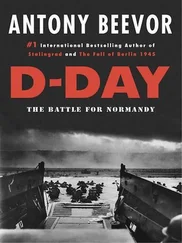I was ignorant of the fact that the English batteries usually fought uncoupled.
I spoke loudly, and my words were overheard. From the front of our regiment a few officers pushed forward to join our group. The right hand file of our regimental line followed them; the movement was copied in the squadrons to the left to restore the alignment, and then by the Chasseurs-à-Cheval of the Guard. This movement, of only a few paces at the right, became more marked [as it was copied] to the left. The brigade of the Dragoons and the Grenadiers-à-Cheval, who were awaiting the order to charge at any moment, believed this had been given.
They set off — and we followed!
That is how the charge of the Imperial Cavalry took place, over the reason for which so many writers have argued so variously.
From that moment, lining up to the left, we crossed the [Charleroi-Brussels] road diagonally so as to have the whole Guard cavalry on the left side of this road. We crossed the flat ground, climbed up the slope of the plateau upon which the English army was drawn up, and attacked together.
The order in which that army was drawn up, or the part exposed to our view, was as follows:
To the right were the Scots Foot, close to the undergrowth which extended to the bottom of the slope. This infantry delivered heavy and well-directed fire.
Then came the squares of line infantry, ordered in a chequerboard pattern, then similar squares of Hanoverian Light infantry; then a fortified farm [La Haye Sainte].
Between the squares were uncoupled batteries, whose gunners were firing and then hiding under their guns, behind them some infantry and some cavalry.
We were nearly level with this farm, between which and us our cuirassiers were charging. We rode through the batteries, which we were unable to drag back with us.
We turned back and threatened the squares, which put up a most honourable resistance.
Some of them had such coolness, that they were still firing ordered volleys by rank.
It has been said that the Dragoons and Grenadiers-à-Cheval to our left broke several squares, personally I did not see it — and I can state that we Lancers did not have the same luck, and that we crossed our lances with the English bayonets in vain. Many of our troopers threw their weapons like spears into the front ranks to try to open up the squares.
The expenditure of ammunition by the English front line and the compact pattern of the squares which composed it meant that the firing was at point-blank range, but it was the harm which the artillery and the squares in the second line were doing to us, in the absence of infantry and artillery to support our attack, which determined our retreat.
We moved slowly and faced front once again in our position at the bottom of the slope, so that we could just make out the English front line.
It was then that Marshal Ney, alone and without a single member of his staff accompanying him, rode along our front and harangued us, calling out to the officers he knew by their names. His face was distracted, and he called out again and again, ‘Frenchmen, let us stand firm! It is here that the keys to our freedom are lying!’I quote him word for word.
Five times we repeated the charge; but since the conditions remained unchanged, we returned to our position at the rear five times.
APPENDIX III
The Duke of Wellington’s Waterloo Despatch
Wellington’s despatch reporting the battle of Waterloo was written on the following day, and published in The Times and the London Gazette Extraordinary on Thursday, 22 June 1815. It is a masterpiece of concise Wellingtonian prose, if not always entirely factually accurate in every regard, since the Duke was writing immediately after the events and only heard about some aspects of the battle from others.
The despatch was sent as a letter to Earl Bathurst, the Secretary for War, and summed up all the actions that had taken place since the start of the campaign; here is an edited version, retaining Wellington’s spelling and grammar:
Waterloo, June 19, 1815
My Lord,
Buonaparte having collected the 1st, 2nd, 3rd, 4th, and 6th corps of the French army and the Imperial Guards, and nearly all the cavalry on the Sambre, and between that river and the Meuse, between the 10th and the 14th of the month, advanced on the 15th and attacked the Prussian posts at Thuin and Lobez, on the Sambre, at day light in the morning.
I did not hear of these events till the evening of the 15th, and immediately ordered the troops to prepare to march, and afterwards to march to their left, as soon as I had intelligence from other quarters to prove that the enemy’s movement upon Charleroy was the real attack …
[Of the battles of Ligny and Quatre Bras:] The Prussian army maintained their position with their usual gallantry and perseverance, against a great disparity of numbers, as the 4th corps of their army, under General Bulow, had not joined, and I was not able to assist them as I wished, as I was attacked myself, and the troops, the cavalry in particular, which had a long distance to march, had not arrived.
We maintained our position also, and completely defeated and repulsed all the enemy’s attempts to get possession of it. The enemy repeatedly attacked us with a large body of cavalry and infantry supported by a numerous and powerful artillery: he made several charges with the cavalry upon our infantry, but all were repulsed in the steadiest manner …
Although Marshal Blucher had maintained his position at Sambref, he still found himself much weakened by the severity of the contest, in which he had been engaged, and as the fourth corps had not arrived, he determined to fall back, and concentrate his army upon Wavre; and he marched there in the night after the action was over.
This movement of the Marshal’s rendered necessary a corresponding one on my part; and I retired from the farm of Quattre Bras upon Genappe, and thence upon Waterloo the next morning, the 17th, at ten o’clock…
The position which I took up in front of Waterloo, crossed the high roads from Charleroy and Nivelle, and had its right thrown back to a ravine near Merke Braine, which was occupied: and its left extended to a height above the hamlet of Ter la Haye, which was likewise occupied. In front of the right centre and near the Nivelle road, we occupied the house and garden of Hougoumount, which covered the return of that flank; and in front of the left centre, we occupied the farm of la Haye Sainte. By our left. we communicated with Marshal Blucher, at Wavre, through Ohaim; and the marshal had promised me, that in case we should be attacked, he would support me with one or more corps, as might be necessary.
The enemy collected his army, with the exception of the third corps, which had been sent to observe Marshal Blucher, on a range of heights to our front, in the course of the night of the 17th and yesterday morning: and at about ten o’clock he commenced a furious attack upon our post at Hougoumont … I am happy to add, that it was maintained throughout the day with the utmost gallantry by these brave troops, notwithstanding the repeated efforts of large bodies of the enemy to obtain possession of it.
This attack upon the right of our centre was accompanied by a very heavy cannonade upon our whole line, which was destined to support the repeated attacks of cavalry and infantry occasionally mixed, but some times separate, which were made upon it. In one of these the enemy carried the farm house of La Haye Sainte, as the detachment of the light battalion of the [King’s German] legion which occupied it had expended all its ammunition, and the enemy occupied the only communication there was with them.
The enemy repeatedly charged our infantry with his cavalry, but these attacks were uniformly unsuccessful, and they afforded opportunities to our cavalry to charge, in one of which Lord E. Somerset’s brigade, consisting of the life guards, royal horse guards, and 1st dragoon guards, highly distinguished themselves, as did that of Major General Sir W. Ponsonby, having taken many prisoners and an eagle.
Читать дальше
Конец ознакомительного отрывка
Купить книгу











